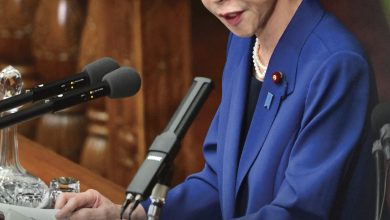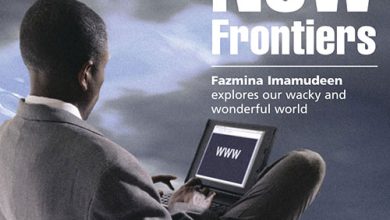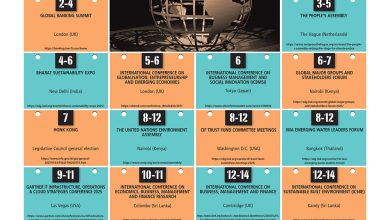FIDEL’S CUBA
THE FIDELITY OF A FOLLOWER
Amantha Perera assesses the potential of Cuba’s new leader as a post-Castro ‘president of continuity’
Cuba is Castro… and Castro is Cuba. That’s what my generation has known of the Latin American nation and its erstwhile leader. It was always about Fidel’s Cuba – the bearded revolutionary in army fatigues holding up or puffing on a cigar was the stuff of legend.
Che Guevara was the idealistic myth dying young for the sake of the revolution while Comrade Fidel was its symbol of longevity and vitality. A tiny nation standing up to the evil might of the US… or so the story went.
To put things in perspective, Fidel Castro was in power from June 1961 until April 2011, two months short of 50 years. The Soviet Union had come and gone but Fidel survived. China slowly morphed into something that no one imagined in the 1960s but Fidel stayed true to his vision.
Nevertheless, there were matters beyond even his control – like old age. In 2006, his health deteriorated and he handed over a measure of power to his younger brother Raul. Though in the ensuing five years there was some speculation that Fidel might return, he never did. The older Castro eventually resigned from all his Communist Party posts in 2011 and the longest serving revolutionary of our time died on 25 November 2016.
Over the past 12 years, Raul Castro had been at the helm. Since he wasn’t as flamboyant as his older brother, Raul has taken a far more sombre approach. Without a great deal of fanfare, relations with the US improved and diplomatic ties were reestablished in 2015.
But Cuba has not opened up as much as other countries that were in the same socialist camp in the mid-20th century. It has not seen the kind of economic boom that China experienced. Its main interaction with the outside world is limited to tourism and sport. Cuba has been unable to reinvent itself as a power to be reckoned with as Russia has done under President Vladimir Putin.
It appears that the Caribbean island is unable to ditch its revolutionary hangover and adapt itself to a new world order. There was also the not negligible factor of Castro the elder and his influence, which seemed to prevent Havana from taking even a small step that is contrary to the revolution. It is as if China was unable to shake off Chairman Mao’s shadow.
Now there’s a chance that Cuba can both in theory and reality break away from the yoke of old if it wants to. This is because it now has a new leader who does not bear the name Castro.
Miguel Mario Díaz-Canel Bermúdez was appointed president to succeed Raul Castro in April. Although 58-year-old Díaz-Canel had been vice president since 2013, he is virtually unknown. The transfer of power was well planned and executed despite the outside world not having much knowledge about the process.
Soon after the thawing of relations, a US Congressional team visiting Cuba in 2015 had met with the future president. According to media reports, Díaz-Canel had been bombarded with questions on his take of the revolution, its impact and Cuba’s future.
But since Díaz-Canel hadn’t fought in the revolution (having been born after it ended), the media reported that he had told the delegation: “I was born in 1960, after the revolution, so I’m not the best person to answer your questions on the subject.” Now he leads a nation of no mean repute and the world waits expectantly.
But it is unlikely that there will be many changes because Díaz-Canel is expected to be a president of continuity vis-à-vis the Castro doctrine and unlikely to make any dramatic changes. The new Cuban president has come up through the ranks and been a loyal servant of the revolution. According to Castro, Díaz-Canel is neither a change nor an improvement.
However, not everything has remained the same.
There had been a few changes under Raul Castro – private investment was allowed, tourism is booming and the country has been much more open under his regime. Castro ensured that he served two terms and then initiated a power transfer.
Beyond this set script, nothing much is likely to change at least in the short term. For starters, the younger Castro is still very much in play at least for the next three years as the head of the Communist Party although he has indicated that he’ll retire by 2021. So any major changes will be highly unlikely until then.
Díaz-Canel is known as a community man and has been a vocal proponent of internet freedom. But he is also a party man and there have also been videos of him criticising the US including a particular website warning that it may be shut down. These anomalies show that he is a party man at heart.
Whatever his persona in public may be, he knows very well how to shore up hard-core support.
And then there is the man in the Oval Office who is unpredictable and seemingly naive in his dealings with international leaders. He can be capricious in a way that is nothing like what Díaz-Canel has ever dealt with before. President Donald Trump is unlikely to be accommodating of a new Cuba under his own watch and will try to prove that the policies of his predecessor have not yielded the anticipated results.
But with the anticipated success in the context of North Korea, Washington may believe there’s a chance of doing the same with Cuba too. It’s still early days but with growing concerns over Russia’s extending power, such a move is not completely out of the question.







